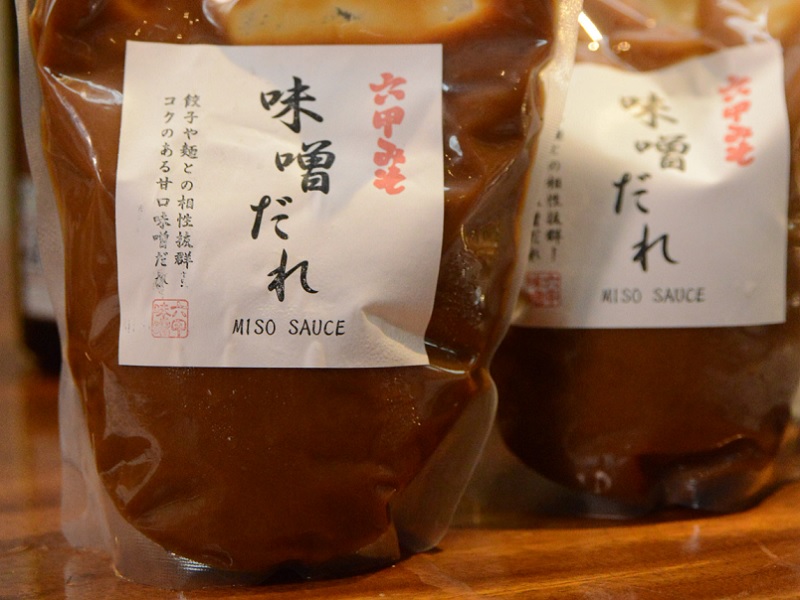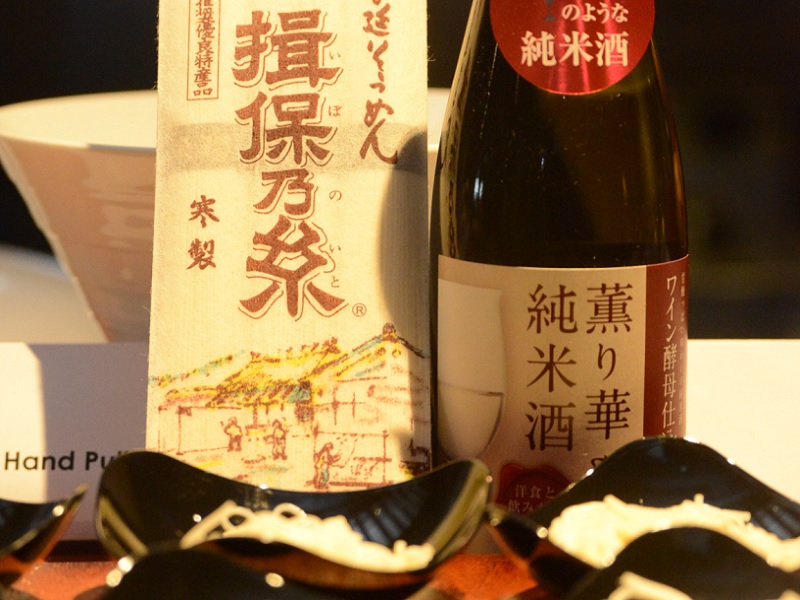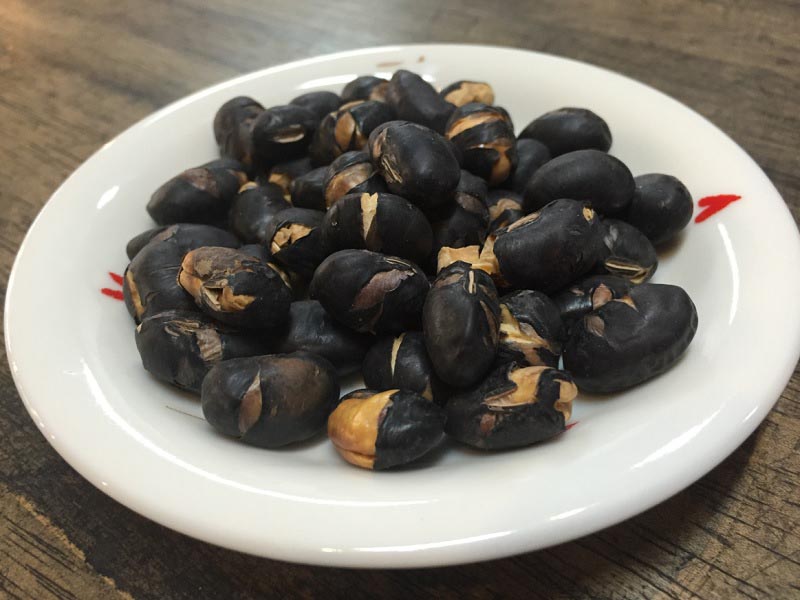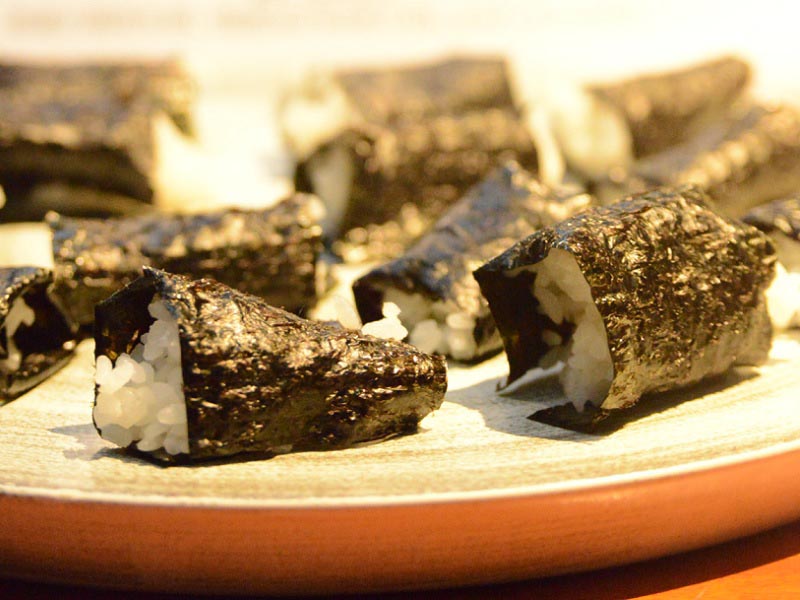From the land & seas of Hyogo Prefecture
by Qian Leung
@ 09 Feb 2018
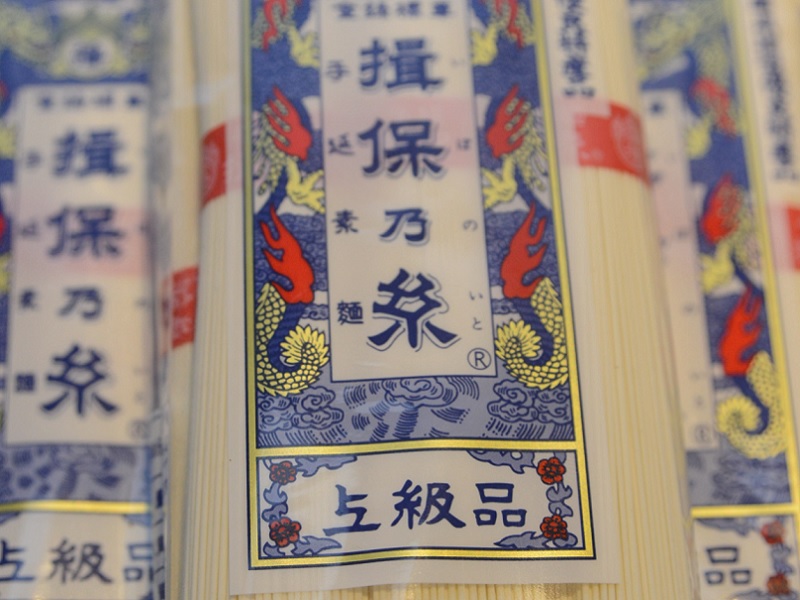
Rokko Miso
Founded in 1918, Rokko Miso was originally known as Hasegawa Kanese Shoten, a pickle and miso shop in Nagata. The shop relocated to Ashiya in Hyogo in 1945, and is today in the hands of third generation miso maker Kenji Hasegawa. The solar-powered workshop produces red rice miso from malted rice slowly matured with salt. Sweet white miso is made by using twice as much malted rice as soybean, and only 5 percent salt. Used in soups, stews, or fried dishes, miso brings a rich aroma and mellow taste.
Hand-pulled Somen
Somen, thin, white noodles hand-pulled from wheat flour, is believed to have originated from Banshu in Hyogo, with a history of more than 600 years. An experienced producer takes 30 hours repeating the hand-pulling process, imparting a springy mouthfeel. Aside from Jokyuhin (special grade), a Tokkyuhin (upper grade) version is available, made in the winter season between December and February from high quality wheat. Somen is traditionally enjoyed chilled with grated ginger, scallion, and a dipping sauce known as tsuyu. In the summer, a game is made out of catching the noodles shooting down a ‘river’ created from bamboo poles and icy water.
Kaori Hanayagu Junmaishu
Founded in 1900, King Brewing manufactures mirin (sweetened Japanese rice wine), as well as junmaishu (sake made from rice, water, yeast, and koji). Instead of using sake yeast, wine yeast is used, giving it a very different, almost wine-like character from the traditional Japanese sake that you may be accustomed to. It reminds me of a viognier, with sweet, peach-like aromas, buttery flavours, and a spicy finish. The official pairing suggestions are cheese, hamburger steak, and stew, but personally I think it would go well with any Japanese ingredient, such as hand-pulled somen noodles, pork shabu shabu, or even black soybean bread.
Tabaguro Black Bean
Since the Edo era (1600s), black beans have been valued for their medicinal properties. Presented as a gift to the Imperial court every year, black beans were soon eaten boiled in soy sauce and sugar by commoners as well. Back then, it was believed that the colour black warded against evil, offering protection from disasters. The tanned colour also reminded farmers of growing tanned from a good day’s work in the fields. Since the word for bean, ‘mame’, can also mean to work diligently and be healthy, eating black soybeans during the New Year is a hope for good days to come.
Awaji Island Onion
Located in southern Hyogo, Awaji Island is blessed with sun and wind from the seas, producing onions with extraordinary softness, sweetness, and deliciousness. After harvest, the onions are air-dried and allowed to ripen, becoming sweeter as they do, and taking on a golden colour. The organically grown onions can be enjoyed sliced into salads, or cooked as onion steak or fried onions. Awaji Island onions can also be made into onion soup. Surprisingly, even without the addition of butter, olive oil, or chicken stock, an onion soup made with just Awaji Island onions and a little salt truly tastes sweet, flavoursome, and satisfying.
Hyogo Nori Seaweed
The best nori seaweed in Japan come from Tokyo Bay, Ariake Bay, and Kobe Bay (Hyogo), with the latter being thicker, with a richer taste. After harvesting, the long ribbons of seaweed are shredded to a paste, before being poured onto framed bamboo mats. The sun, or a low heat, dries them into sheets, which can then be packed. If it loses its crispness, you can toast it for a few seconds in a toaster, whereupon its nutty scent will also come to the fore. Nori seaweed is ubiquitous as a wrap for onigiri rice balls, hand-rolled sushi, and as a seasoning.
Hand-pulled somen from Hyogo: masaki-uchiyama@ibonoito.or.jp
(Available in Singapore at J-mart, Isetan Singapore Scotts, and FairPrice Finest)
Rokko miso: t.hasegawa@rokkomiso.co.jp
Awaji Island onions: y.kasagi@jvcc-japan.com
Kaori Hanayagu Junmaishu: xbl11479@niftycom
Tabaguro black bean: t-kimura@odagaki.co.jp
Hyogo nori seaweed: seat-club@hggyoren.jf-net.ne.jp
Adapted from Jan Feb 18 issue of Cuisine & Wine Asia.
 Rokko Miso
Rokko Miso